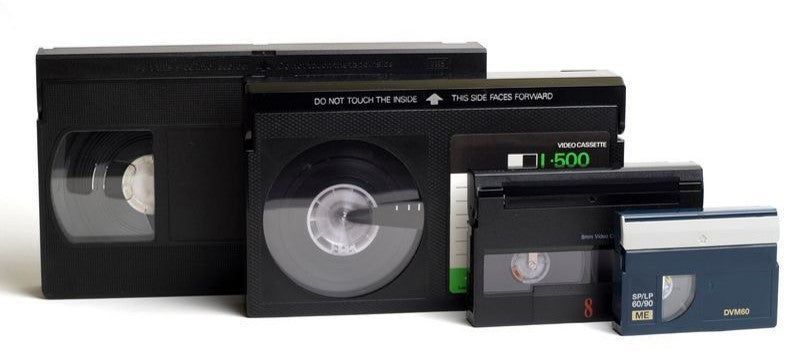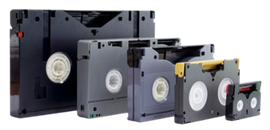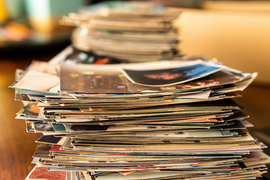
Memories are precious, and for many people, camcorder tapes hold a treasure trove of irreplaceable moments. Whether it's a long-lost family vacation, a graduation ceremony, or a friend's wedding, these tapes capture the essence of our nostalgic past. Unfortunately, technology has evolved, and it may seem impossible to watch these old camcorder tapes without the original device. However, there are several methods available to bring these memories back to life.
This comprehensive guide explores the different camcorder tape formats, as well as how to watch these tapes without the original camcorder. You'll learn about storing old tapes for future use, converting old camcorder tapes to digital formats, and outsourcing to professional tape conversion services. By the end of this guide, you'll have a clear understanding of how to revive the precious memories stored on these old camcorder tapes.
Understanding Different Camcorder Tape Formats
Before diving into how to watch old camcorder tapes, it's essential to understand the various video cassette tape formats. Each format has its own unique set of specifications and challenges. Knowing your exact type of camcorder tape will help determine the best method for watching it.
VHS
VHS (Video Home System) is the most well-known and widely used camcorder tape format. Introduced in the late 1970s, VHS tapes were the primary format for home video recording and playback. They are relatively large compared to other tape formats and typically have a runtime of 2-8 hours.
VHS-C
VHS-C (VHS Compact) is a smaller version of the VHS tape, designed for use in compact camcorders. These tapes are similar in size to a cassette tape and have a runtime of around 30 minutes. They can be played in a standard VHS player with the use of an adapter.
8mm
8mm tapes, also known as Video8, were introduced in the mid-1980s as a smaller, more portable alternative to VHS. These tapes are about the size of a VHS-C cassette tape and have a runtime of up to 2 hours. 8mm tapes require a specific 8mm player or camcorder for playback, but can also be converted to digital format or played using a VCR with an adapter.
Hi8
Hi8 is an improved version of the 8mm tape format, offering higher video resolution and better audio quality. These tapes are the same size as 8mm tapes and have a similar runtime. Like 8mm tapes, Hi8 tapes require a specific Hi8 player or camcorder for playback or can be converted to digital format.
Digital8
Digital8 tapes are a digital version of the 8mm tape format, offering even higher video resolution and audio quality. These tapes are the same size as 8mm and Hi8 tapes but require a specific Digital8 player or camcorder for playback. Digital8 tapes can also be converted to digital format and played using a computer or digital media player.

Storing Old Camcorder Tapes for Future Use
Proper storage of old camcorder tapes is essential for ensuring that the memories they hold can be enjoyed for years to come. To store old camcorder tapes, it's important to keep them in a cool, dry environment, away from direct sunlight and extreme temperatures. Tapes should be stored vertically, rather than stacked, to avoid damage to the tape's casing and internal components. It's also a good idea to periodically rewind and fast-forward the tapes to prevent them from sticking together, which can cause irreparable damage. Watch out for moldy VHS tapes!
Options for Watching Tapes Without a Camcorder
With an understanding of the various tape formats and how to safely store them, you can now explore the different methods for watching your old camcorder tapes without the original device. These include using other devices & adapters, do-it-yourself (DIY) conversion of your camcorder tapes to digital, and outsourcing to professional tape conversion services.
Using VCRs & Adapters to Play Old Camcorder Tapes
Even if your original camcorder is broken, you can borrow a comparable device from a friend, or even buy a used camcorder on eBay. Other players may have limited functions compared to the camcorder that first recorded your tape, but it can sometimes be enough just to watch the video. You can also use a VHS-C adapter that plays that type of camcorder tape on a standard VCR.
Converting Old Camcorder Tapes to Digital Formats
One of the most popular and effective methods for watching old camcorder tapes is to convert them to a digital format. This process involves transferring the analog video and audio information from the tape to a digital file that can be played on a computer or digital media player. There are several ways to convert old camcorder tapes to digital formats, including using a digital camcorder, a video capture device, or a DVD recorder. Each method has its own set of pros and cons, but all will result in a digital file that's more durable than the original camcorder tape.
Digital Camcorder
For those with access to a digital camcorder that supports analog video input, it's possible to use the camcorder to convert old camcorder tapes to digital format. This method involves connecting the VCR or camcorder with the appropriate playback capabilities to the digital camcorder, which will record the video and audio information onto a digital tape or memory card. Although this method can produce high-quality digital files, it requires a digital camcorder with specific features, which may not be readily available to all users.
Video Capture Device
A video capture device connects to a computer via USB and allows the user to transfer the video and audio from an old camcorder tape to a digital file. This method requires a VCR or camcorder with the appropriate playback capabilities, as well as the necessary cables to connect the VCR or camcorder to the video capture device. The video capture process can be time-consuming, as it requires the user to play the entire tape in real-time while the video and audio are captured. However, this method generally results in high-quality digital files that can be edited, shared, and stored for future viewing.
DVD Recorder
Using a DVD recorder is another option for converting old camcorder tapes to digital format. This method involves connecting a VCR or camcorder with the appropriate playback capabilities to a DVD recorder, which will burn the video and audio information onto a blank DVD. While this method is relatively simple and straightforward, the resulting DVDs may not offer the same level of quality as a digital file created using a video capture device. Additionally, scratched DVDs may not provide the same long-term preservation benefits as a digital file.
Outsourcing to Professional Tape Conversion Services
For those who prefer a more hands-off approach, outsourcing to a video cassette conversion service is an excellent way to quickly travel time. Professional services specialize in converting various camcorder tape formats to digital files, ensuring that the video and audio quality is preserved and that the final product is compatible with modern playback devices. While outsourcing tape conversion can be more expensive than converting camcorder tapes at home, it offers the convenience of not having to invest in specialized equipment or spend time learning how to use it. Most companies do good work, just be sure to read third-party reviews of the video conversion service you choose.

